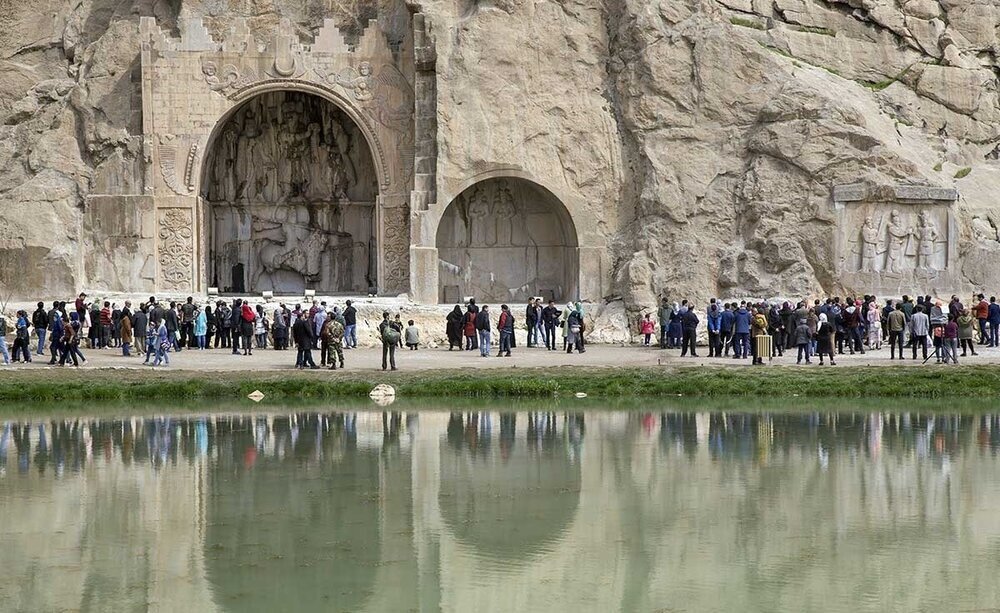Archaeologically-rich Parthian cemetery to become open-air museum in western Iran

TEHRAN – There is a plan to establish an open-air museum over an archaeologically-rich cemetery, which dates back to the Parthian Empire (247 BC to 224 CE), in western Iran.
Accidentally discovered in 1969 by municipal workers, the graveyard is now part of the Taq-e Bostan complex, which also comprises a series of exquisite ancient bas-relief carvings, an ancient village, and a Sassanid hunting ground.
“The cultural and historical complex of Taq-e Bostan has a total area of about eight hectares, of which four hectares is dedicated to the Parthian cemetery and pine trees, and the rest is a space that is [currently] open to visitors,” the director of the ancient site said on Tuesday.
“The cemetery was discovered by chance by municipal workers in [the Iranian year] 1348 and was excavated at the same time by late Seifollah Kambakhshfard, who was a prominent Iranian archaeologist, Mohammadmehdi Feizaqai said.
During the excavations conducted by the late Kambakhshfard on this ancient site, about 40 urns from the Parthian period were discovered in which the dead were buried in the form of fetuses along with some provisions, the official explained.
Moreover, those digs yielded artifacts from the Bronze Age, Iron Age, and Parthian period, Feizaqai said.
The official said they are set to continue excavations in the ancient graveyard to set up an outdoor museum with international standards.
Situated in Iran’s modern Kermanshah province, Taq-e Bustan was originally the site of a Parthian royal hunting garden, but the Sassanians later added their own regal stamp. Its biggest alcove features elephant-mounted hunting scenes on the sidewalls and highlight the coronation of Khosrow II (r 590–628), beneath which the king rides off in full armor and chain mail (half a millennium before the European Black Prince made it fashionable.).
The second niche shows King Shapur III and his Roman-stomping grandfather Shapur II. To the right of the niches, is a fine tableau again showing Shapur II (r 379–383), in which he is depicted trampling over the Roman emperor Julian the Apostate (whom he defeated in 363) and receiving a crown of blessings from the Zoroastrian god Mithras.
According to Lonely Planet, the site’s extraordinary Sassanian bas-reliefs of ancient victorious kings, which are inscribed into the base of a towering cliff, divide opinions. Some travelers feel disappointed by the Taq-e Bustan experience, as there's a relatively high admission price for a few stone carvings and a duck pond, both of which are viewed easily from outside the fence. For Iranians, a visit is a joyous celebration of their incredible Persian heritage. Whether you immerse yourself or crank up the zoom lens is up to you.
Late afternoon is said to be the best time to visit, as the cliff turns a brilliant orange in the setting sun, which then dies poetically on the far side of the duck pond. The surrounding open-air restaurants rock out till late in the evening and the carvings are warmly floodlit. The site is 10km north of Kermanshah's city center.
Kermanshah, formerly Bakhtaran, the capital of Kermanshah province, was founded in the 4th century CE by Bahram IV of the Sasanian dynasty.
AFM
Leave a Comment